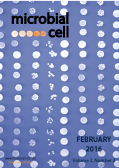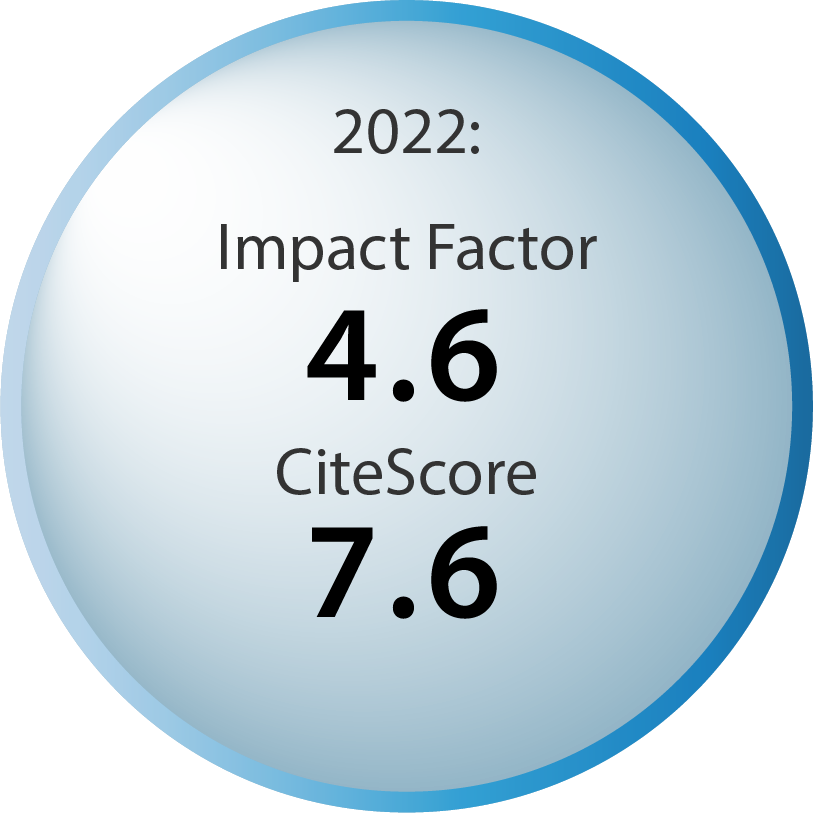Table of contents
Volume 3, Issue 2, pp. 53 - 94, February 2016
Cover: The cover is a collage composed of spots of yeast grown on solid media. In the original figure (Fig. 1A, Park
et al., this MIC issue, Vol. 3 No. 2), the relative growth of the spots scored for effects of genetic modifiers on oligomerization of Aβ
42, which has been implicated as a toxic species in Alzheimer's disease. Image by Sei-Kyoung Park and Susan W. Liebman (University of Nevada, USA); modified by MIC. The cover is published under the Creative Commons Attribution (CC BY) license.
Enlarge issue cover
Inhibition of Aβ42 oligomerization in yeast by a PICALM ortholog and certain FDA approved drugs
Sei-Kyoung Park, Kiira Ratia, Mariam Ba, Maria Valencik and Susan W. Liebman
Research Articles |
page 53-64 | 10.15698/mic2016.02.476 | Full text | PDF |
Abstract
The formation of small Aβ42 oligomers has been implicated as a toxic species in Alzheimer disease (AD). In strong support of this hypothesis we found that overexpression of Yap1802, the yeast ortholog of the human AD risk factor, phosphatidylinositol binding clathrin assembly protein (PICALM), reduced oligomerization of Aβ42 fused to a reporter in yeast. Thus we used the Aβ42-reporter system to identify drugs that could be developed into therapies that prevent or arrest AD. From a screen of 1,200 FDA approved drugs and drug-like small compounds we identified 7 drugs that reduce Aβ42 oligomerization in yeast: 3 antipsychotics (bromperidol, haloperidol and azaperone), 2 anesthetics (pramoxine HCl and dyclonine HCl), tamoxifen citrate, and minocycline HCl. Also, all 7 drugs caused Aβ42 to be less toxic to PC12 cells and to relieve toxicity of another yeast AD model in which Aβ42 aggregates targeted to the secretory pathway are toxic. Our results identify drugs that inhibit Aβ42 oligomers from forming in yeast. It remains to be determined if these drugs inhibit Aβ42 oligomerization in mammals and could be developed as a therapeutic treatment for AD.
Mitochondrial proteomics of the acetic acid – induced programmed cell death response in a highly tolerant Zygosaccharomyces bailii – derived hybrid strain
Joana F Guerreiro, Belém Sampaio-Marques, Renata Soares, Ana Varela Coelho, Cecília Leão, Paula Ludovico, Isabel Sá-Correia
Research Articles |
page 65-78 | 10.15698/mic2016.02.477 | Full text | PDF |
Abstract
Very high concentrations of acetic acid at low pH induce programmed cell death (PCD) in both the experimental model Saccharomyces cerevisiae and in Zygosaccharomyces bailii, the latter being considered the most problematic acidic food spoilage yeast due to its remarkable intrinsic resistance to this food preservative. However, while the mechanisms underlying S. cerevisiae PCD induced by acetic acid have been previously examined, the corresponding molecular players remain largely unknown in Z. bailii. Also, the reason why acetic acid concentrations known to be necrotic for S. cerevisiae induce PCD with an apoptotic phenotype in Z. bailii remains to be elucidated. In this study, a 2-DE-based expression mitochondrial proteomic analysis was explored to obtain new insights into the mechanisms involved in PCD in the Z. bailii derived hybrid strain ISA1307. This allowed the quantitative assessment of expression of protein species derived from each of the parental strains, with special emphasis on the processes taking place in the mitochondria known to play a key role in acetic acid – induced PCD. A marked decrease in the content of proteins involved in mitochondrial metabolism, in particular, in respiratory metabolism (Cor1, Rip1, Lpd1, Lat1 and Pdb1), with a concomitant increase in the abundance of proteins involved in fermentation (Pdc1, Ald4, Dld3) was registered. Other differentially expressed identified proteins also suggest the involvement of the oxidative stress response, protein translation, amino acid and nucleotide metabolism, among other processes, in the PCD response. Overall, the results strengthen the emerging concept of the importance of metabolic regulation of yeast PCD.
The transcriptional repressor Sum1p counteracts Sir2p in regulation of the actin cytoskeleton, mitochondrial quality control and replicative lifespan in Saccharomyces cerevisiae
Ryo Higuchi-Sanabria, Jason D. Vevea, Joseph K. Charalel, Maria L. Sapar, Liza A. Pon
Research Reports |
page 79-88 | 10.15698/mic2016.02.478 | Full text | PDF |
Abstract
Increasing the stability or dynamics of the actin cytoskeleton can extend lifespan in C. elegans and S. cerevisiae. Actin cables of budding yeast, bundles of actin filaments that mediate cargo transport, affect lifespan control through effects on mitochondrial quality control. Sir2p, the founding member of the Sirtuin family of lifespan regulators, also affects actin cable dynamics, assembly, and function in mitochondrial quality control. Here, we obtained evidence for novel interactions between Sir2p and Sum1p, a transcriptional repressor that was originally identified through mutations that genetically suppress sir2∆ phenotypes unrelated to lifespan. We find that deletion of SUM1 in wild-type cells results in increased mitochondrial function and actin cable abundance. Furthermore, deletion of SUM1 suppresses defects in actin cables and mitochondria of sir2∆ yeast, and extends the replicative lifespan and cellular health span of sir2∆ cells. Thus, Sum1p suppresses Sir2p function in control of specific aging determinants and lifespan in budding yeast.
Learning epigenetic regulation from mycobacteria
Sanjeev Khosla, Garima Sharma and Imtiyaz Yaseen
Microreviews |
page 92-94 | 10.15698/mic2016.02.480 | Full text | PDF |
Abstract
In a eukaryotic cell, the transcriptional fate of a gene is determined by the profile of the epigenetic modifications it is associated with and the conformation it adopts within the chromatin. Therefore, the function that a cell performs is dictated by the sum total of the chromatin organization and the associated epigenetic modifications of each individual gene in the genome (epigenome). As the function of a cell during development and differentiation is determined by its microenvironment, any factor that can alter this microenvironment should be able to alter the epigenome of a cell. In the study published in Nature Communications (Yaseen [2015] Nature Communications 6:8922 doi: 10.1038/ncomms9922), we show that pathogenic Mycobacterium tuberculosis has evolved strategies to exploit this pliability of the host epigenome for its own survival. We describe the identification of a methyltransferase from M. tuberculosis that functions to modulate the host epigenome by methylating a novel, non-canonical arginine, H3R42 in histone H3. In another study, we showed that the mycobacterial protein Rv2966c methylates cytosines present in non-CpG context within host genomic DNA upon infection. Proteins with ability to directly methylate host histones H3 at a novel lysine residue (H3K14) has also been identified from Legionella pnemophilia (RomA). All these studies indicate the use of non-canonical epigenetic mechanisms by pathogenic bacteria to hijack the host transcriptional machinery.
Location, location, location. Salmonella senses ethanolamine to gauge distinct host environments and coordinate gene expression
Christopher J. Anderson and Melissa M. Kendall
Microreviews |
page 89-91 | 10.15698/mic2016.02.479 | Full text | PDF |
Abstract
Chemical and nutrient signaling mediate all cellular processes, ensuring survival in response to changing environmental conditions. Ethanolamine is a component of phosphatidylethanolamine, a major phospholipid of mammalian and bacterial cell membranes. Ethanolamine is abundant in the gastrointestinal (GI) tract from dietary sources as well as from the normal turnover of intestinal epithelial and bacterial cells in the gut. Additionally, mammalian cells maintain intracellular ethanolamine concentrations through low and high-affinity uptake systems and the internal recycling of phosphatidylethanolamine; therefore, ethanolamine is ubiquitous throughout the mammalian host. Although ethanolamine has profound signaling activity within mammalian cells by modulating inflammatory responses and intestinal physiology, ethanolamine is best appreciated as a nutrient for bacteria that supports growth. In our recent work (Anderson, et al. PLoS Pathog (2015), 11: e1005278), we demonstrated that Salmonella enterica serovar Typhimurium (Salmonella) exploits ethanolamine signaling to adapt to distinct host environments to precisely coordinate expression of genes encoding metabolism and virulence, which ultimately enhances disease progression.










